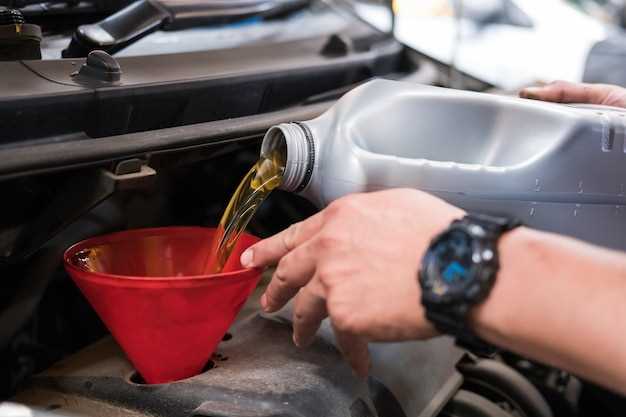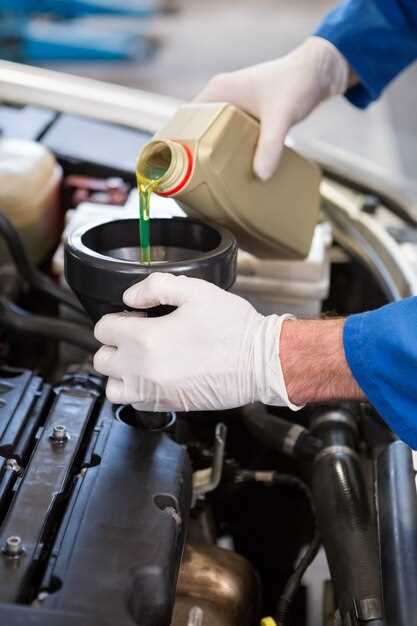
Maintaining the proper function of your vehicle’s steering system is crucial for safe driving and overall vehicle performance. One of the essential aspects of steering system maintenance is to regularly check and replace the power steering fluid. This fluid plays a vital role in lubricating and enhancing the efficiency of the steering mechanism, ensuring a smooth and responsive driving experience.
Over time, power steering fluid can become contaminated with debris and moisture, leading to decreased effectiveness and potentially causing damage to the system. This step-by-step guide will walk you through the process of replacing your power steering fluid, empowering you to take control of your vehicle’s maintenance and prolonging the life of your steering system.
By following this straightforward approach, you can ensure that your power steering system operates optimally, providing you with the steering response and performance you deserve. Let’s dive into the details and get started on this vital maintenance task.
Identifying the Right Power Steering Fluid for Your Vehicle
Choosing the correct power steering fluid is crucial for the maintenance of your vehicle’s steering system. Various types of power steering fluids are available, and using the wrong one can damage your system. To identify the right fluid, first consult your vehicle’s owner manual. Manufacturers often specify the type of fluid that should be used, which can include conventional, synthetic, or a specific brand.
Next, check the color and viscosity of the existing fluid. Most power steering fluids are either clear, red, or blue, and their appearance can indicate their suitability. If the fluid appears dark or contaminated, it is advisable to replace it with a fresh, appropriate fluid.
Additionally, consider whether your vehicle has a hydraulic or electric power steering system. Hydraulic systems typically require specific fluids, while electric systems may use a different type altogether. Always check with your dealership or a trusted automotive expert if you are uncertain about your vehicle’s requirements.
Finally, be aware of any symptoms that may indicate a problem with the steering system. If you notice changes in steering feel or noise when turning, it may be time to inspect and possibly replace the power steering fluid. Regular maintenance and using the correct fluid are essential for keeping your steering system in optimal condition.
Tools and Materials Needed for Fluid Replacement
When preparing to replace the power steering fluid, having the right tools and materials is essential for a successful and efficient process. Here is a list of what you will need:
1. Power Steering Fluid: Ensure you have the correct type of power steering fluid specified in your vehicle’s manual. This is crucial for the proper functioning of the steering system.
2. Funnel: A funnel will help you pour the new fluid into the reservoir without spills and ensure accuracy.
3. Drain Pan: This is necessary to catch any old fluid that is drained from the system, preventing any mess in your workspace.
4. Turkey Baster or Syringe: This tool is useful for removing old fluid from the reservoir, especially if it is not easily accessible.
5. Wrench Set: A set of wrenches will be needed to loosen and tighten any fittings or hoses connected to the power steering system.
6. Cloth or Rag: Keep a clean cloth handy to wipe off any spills or to clean the area around the reservoir and fittings.
7. Safety Gloves: Wearing safety gloves will protect your hands from fluid and provide a better grip while handling tools.
8. Safety Glasses: Protect your eyes from splashes when working with fluids and ensure a safer working environment.
9. Vehicle Manual: Always reference your vehicle’s manual for specific instructions on fluid replacement and specifications regarding power steering fluid.
Having these tools and materials ready will simplify the process of replacing power steering fluid, making it more efficient and less prone to errors. Always prioritize safety and follow the guidelines provided in your vehicle’s manual.
How to Locate the Power Steering Reservoir
Locating the power steering reservoir is an essential step in the maintenance of your vehicle’s steering system. Typically, the reservoir is a small plastic or metal container that holds the power steering fluid needed for the hydraulic system to function effectively.
To find the power steering reservoir, begin by opening the hood of your vehicle. Stand in front of the car and look towards the rear of the engine bay. The reservoir is often situated near the front, typically on the driver’s side. It is usually marked with a cap labeled “power steering,” and may feature a steering wheel icon for easy identification.
In some vehicles, the reservoir may be more challenging to access, especially in compact engine compartments. If you’re having difficulty locating it, consult your owner’s manual for specific information regarding the placement of the power steering reservoir in your make and model.
Once found, inspect the reservoir for proper fluid levels and any signs of damage or leaks. Maintaining the correct level of power steering fluid is crucial to ensuring optimal performance of your steering system.
Draining the Old Power Steering Fluid Safely
Before beginning the process of draining the old power steering fluid, ensure you have all necessary tools and materials ready. This includes a suitable container for collecting the fluid, wrenches, and safety gear such as gloves and goggles. Proper maintenance of your power steering system starts with safely handling the fluid to prevent spills and environmental hazards.
Begin by parking your vehicle on a level surface and turning off the engine. After ensuring the engine is cool, locate the power steering reservoir under the hood. Remove the cap slowly to release any built-up pressure, but be cautious as pressure can cause fluid to spray. Check the fluid level to determine how much old fluid will need to be drained.
Next, identify the return line of the power steering system, which typically connects the steering gear to the reservoir. Place your container under the line to catch the old fluid. Using your wrench, carefully loosen the hose clamp and disconnect the return line. Allow the old fluid to drain completely into the container.
While the fluid is draining, inspect the disconnected line for any signs of wear or damage. Regular maintenance includes checking these components to prevent future leaks or failures. Once the flow has stopped, reconnect the line securely and replace any clamps you may have removed.
After draining the old fluid, ensure that you dispose of it properly at a designated recycling facility or service center. Do not pour the fluid down the drain or dispose of it in regular trash, as it can harm the environment. By following these steps for draining power steering fluid, you ensure that your vehicle’s steering system remains in optimal condition for safe and reliable performance.
Filling the Reservoir with New Power Steering Fluid

Replacing power steering fluid is essential for the longevity and performance of your vehicle’s steering system. Proper maintenance involves correctly filling the power steering fluid reservoir to ensure optimal function. Follow these steps to fill the reservoir with new power steering fluid:
- Ensure Safety: Park your vehicle on a level surface and engage the parking brake. Allow the engine to cool if it was running previously.
- Locate the Reservoir: Open the hood and identify the power steering fluid reservoir. This is typically labeled and may have a cap marked with a steering wheel icon.
- Remove the Cap: Clean the area around the reservoir cap to prevent contamination. Carefully remove the cap and set it aside.
- Check Fluid Level: Use a dipstick if available or observe the markings on the reservoir to check the current fluid level.
- Choose the Right Fluid: Ensure you have the correct type of power steering fluid as specified by your vehicle manufacturer. Using the wrong fluid can lead to power steering failures.
- Fill the Reservoir: Slowly pour new power steering fluid into the reservoir. Avoid overfilling, which can cause fluid to overflow and create a mess.
- Check Fluid Level Again: After filling, check the fluid level again to make sure it is within the recommended range.
- Replace the Cap: Clean any spills and securely replace the reservoir cap to prevent contamination.
- Test the Steering: Start your engine and turn the steering wheel from lock to lock to circulate the new fluid through the system.
- Inspect for Leaks: After a short drive, check under the vehicle and around the reservoir for any signs of leaks.
Regular maintenance of your power steering system enhances the power and efficiency of your vehicle, providing a smoother driving experience. By following these steps, you’ll ensure that your power steering fluid is replenished effectively.
Testing the Steering System After Fluid Replacement

Once you have completed the replacement of the power steering fluid, it is essential to test the steering system to ensure that everything is functioning correctly. A well-functioning power steering system significantly enhances driving comfort and safety. Follow these steps to effectively test the system after fluid replacement:
| Step | Action | Outcome |
|---|---|---|
| 1 | Start the Vehicle | The power steering pump should engage, circulating the new fluid through the system. |
| 2 | Check for Leaks | Inspect the power steering pump, hoses, and connections for any signs of leaking fluid. |
| 3 | Turn the Steering Wheel | Rotate the steering wheel from lock to lock several times to remove air from the system. |
| 4 | Listen for Noises | Listen for any unusual sounds (such as whining) which may indicate issues with the power steering pump or fluid levels. |
| 5 | Test Steering Response | Take the vehicle for a short drive to assess the steering response and maneuverability. Ensure the steering feels smooth and responsive without any resistance. |
After performing these steps, it is vital to check the power steering fluid level again. If the level has dropped, it may indicate trapped air or hidden leaks, necessitating further investigation. Regular testing and maintenance ensure the longevity of your power steering system and contribute to safe driving conditions.
